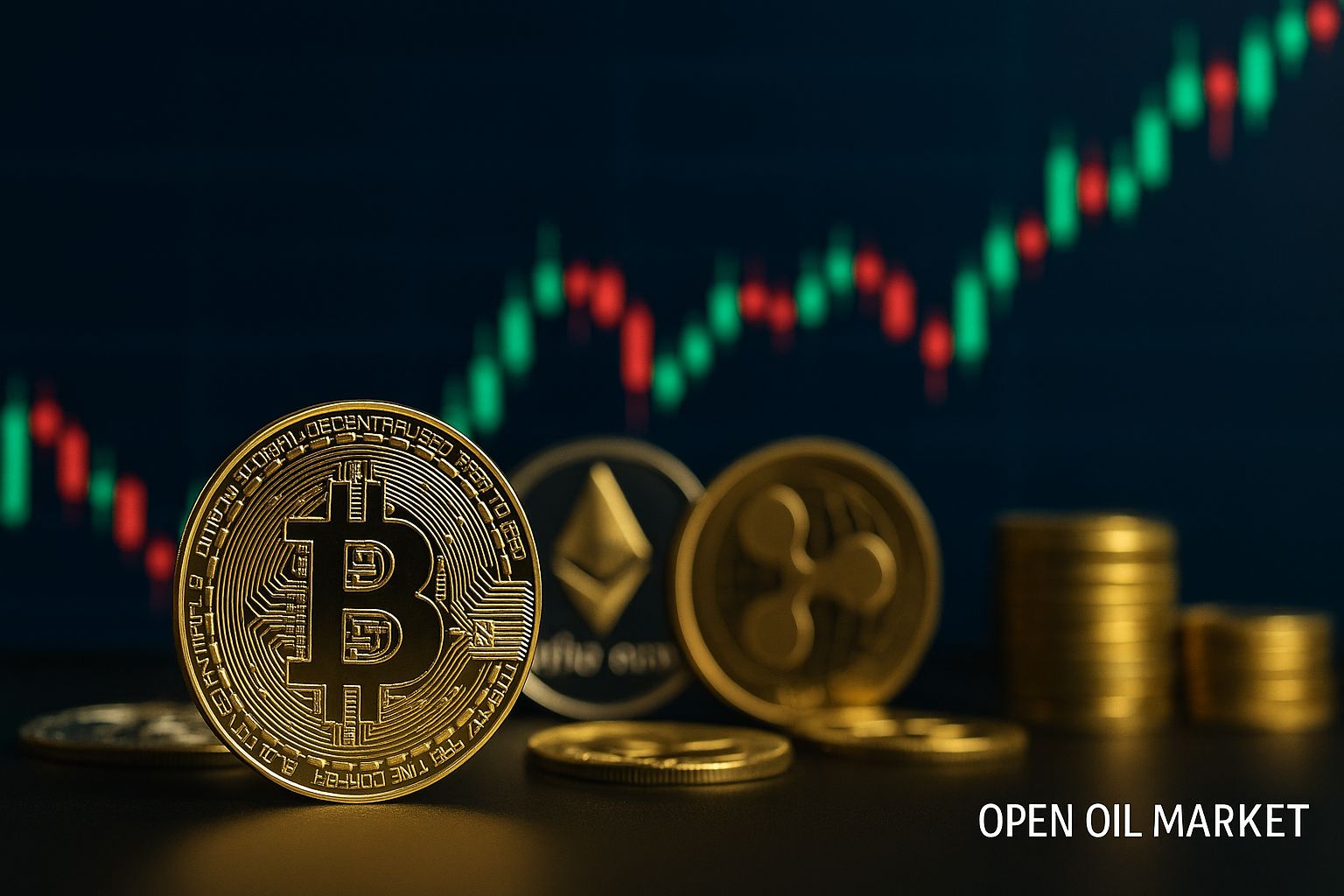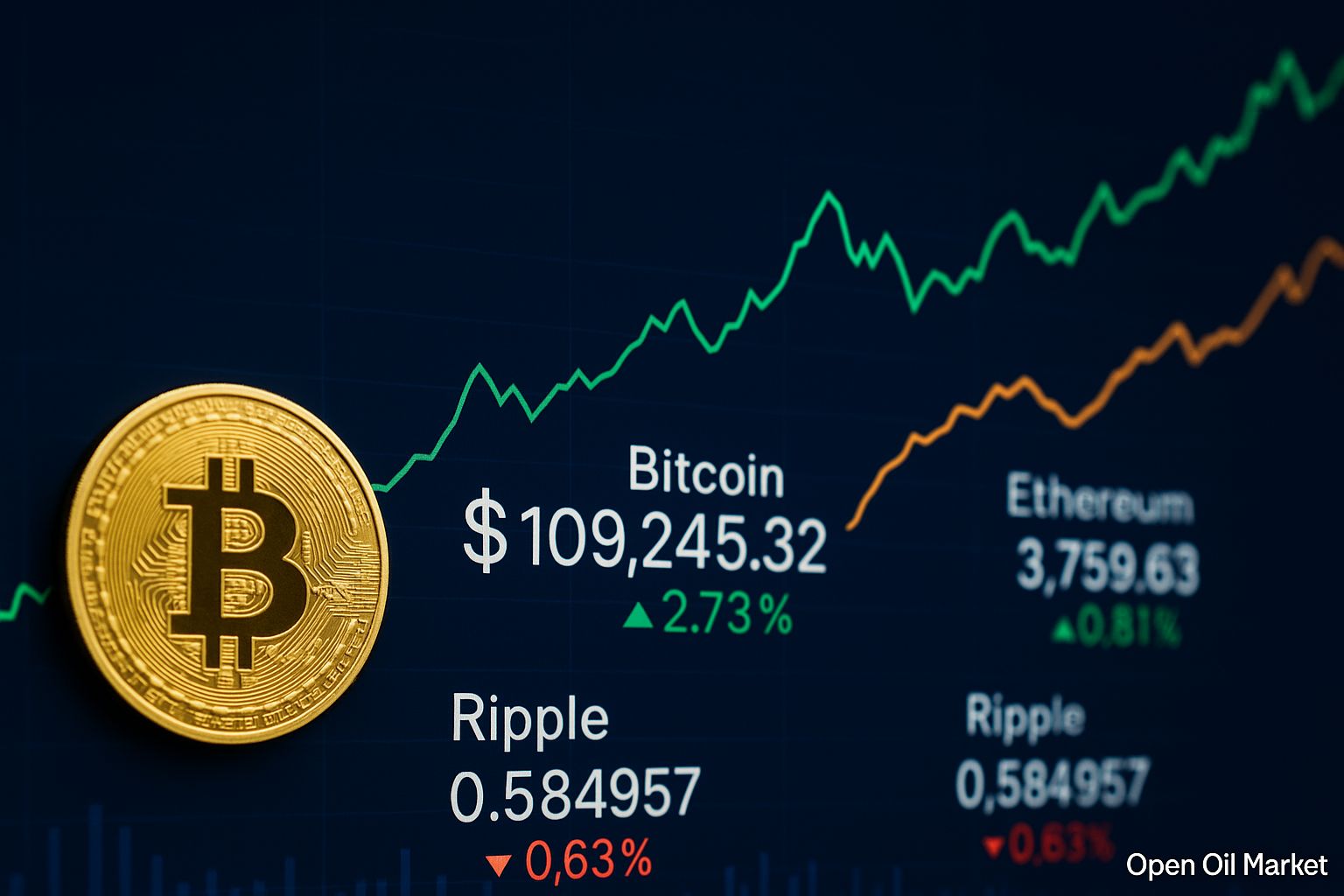
Current Cryptocurrency News as of October 25, 2025: Bitcoin Stabilizes Above $110,000, Ethereum and Altcoins Recover, Institutional Investors Strengthen Positions. A Comprehensive Market Overview and Top-10 Cryptocurrencies.
The cryptocurrency market concludes the week with stability following recent turmoil. Throughout October, sharp price fluctuations have been observed; however, by Saturday, Bitcoin remains above the $110,000 mark, demonstrating a recovery from the recent correction. Investors exhibit cautious optimism: leading altcoins have partially rebounded from recent declines, and institutional capital continues to flow into the sector. Below, we explore the key events and trends in the cryptocurrency market at this time.
Market Overview
The total market capitalization of cryptocurrencies at the end of October exceeds $3 trillion, indicating the scale and maturity of this market. However, the current month has been quite volatile: after a new historical high for Bitcoin above $125,000 at the beginning of October, the market experienced a sharp decline due to a sudden escalation in trade relations between the U.S. and China. Reports of the intensification of the trade conflict triggered a rapid sell-off, which became the largest in history in terms of liquidation volume of margin positions. As a result, the total value of digital assets temporarily decreased, and the "fear and greed" index dropped into extreme fear territory. Nevertheless, by the end of the month, the market managed to stabilize: major cryptocurrencies returned to growth, and investor sentiment improved amid a reduction in macroeconomic uncertainty and encouraging inflation data.
Bitcoin Maintains Strong Position
The flagship Bitcoin (BTC) displays resilience following the recent wave of sell-offs. Currently, its price fluctuates around $110,000, which is only slightly below the record high of the beginning of the month (~$126,000). The key support level around $105,000 withstood the October decline, bolstering market confidence. Bitcoin's dominance by market capitalization is again on the rise, reaching approximately 50% of the entire crypto market, as some capital from riskier altcoins flows into the largest cryptocurrency. Experts note that long-term factors—from the reduction of mining rewards (halving) to the launch of Bitcoin exchange-traded funds—continue to support a bullish outlook for BTC despite short-term price fluctuations.
Ethereum Rebounds and Strengthens Position
The second-largest cryptocurrency by market capitalization, Ethereum (ETH), also demonstrates a steady recovery. The price of ETH has returned to around $4,000, recovering from the mid-month slump (during the panic, prices fell to about ~$3,400). Ethereum remains a key platform for decentralized finance (DeFi) and NFTs, continuing to attract developers and capital. Recently launched Ethereum-based exchange-traded funds and the development of Layer-2 networks (such as StarkNet and zkSync) enhance the appeal of this platform for institutional investors. Analysts note that if current trends persist, Ethereum could approach historical highs, particularly as market sentiment improves.
Ripple and XRP: Institutional Progress
The XRP token, associated with fintech company Ripple, has stood out among growth leaders. Its price has exceeded $2.50, reaching multi-year highs. The upward trend of XRP is supported by a series of positive news: firstly, Ripple achieved a significant victory in its protracted legal battle with American regulators, removing substantial uncertainty surrounding the token. Secondly, the company is actively expanding products for institutional clients—launching the Ripple Prime platform for servicing large capital, and exchange-traded funds linked to XRP have emerged in select countries. These steps bolster investor confidence and contribute to the increasing demand for XRP, bringing it back among the most valuable cryptocurrencies.
Solana and Other Altcoins: Selective Growth
The altcoin segment shows mixed dynamics at the end of October. Standing out the most is Solana (SOL): its price has risen to about $195, demonstrating about 5% growth over the week. Solana attracts the attention of institutional players and is increasingly seen as an indicator of the market's risk appetite, particularly after trading volume on its decentralized exchanges surpassed that of Ethereum. Meanwhile, other major altcoins are exhibiting divergent behavior. Binance Coin (BNB) has significantly strengthened on the wave of positive news surrounding the Binance ecosystem, while Tron (TRX) corrected following its previous rally. Cardano (ADA) maintains stable positions around $0.65, and the meme-cryptocurrency Dogecoin (DOGE) managed to return to levels of about $0.20 after a fall, accompanied by a surge in trading activity. Overall, interest in alternative coins remains selective—investors prefer projects with clear growth drivers and avoid excessively speculative assets.
Institutional Investments and Regulation
The influx of institutional capital into cryptocurrencies in 2025 has reached record levels, largely due to regulatory shifts. In the U.S., the launch of the first spot Bitcoin exchange-traded funds (ETFs) has opened an easy investment route for traditional investors into crypto-assets via the stock market. Similar products are emerging abroad—ranging from Ethereum ETFs to funds on individual altcoins—which reflects the global recognition of digital currencies. Concurrently, the European Union is implementing comprehensive regulation (MiCA), establishing clearer rules for the industry and attracting financial institutions into the sector. Positive changes have also affected the largest exchange, Binance: its founder received a pardon in the U.S. for several accusations, removing a long-held regulatory risk for the company. Collectively, these factors enhance confidence in the industry, lowering barriers for new institutional capital inflows into the crypto market.
Top 10 Most Popular Cryptocurrencies
- Bitcoin (BTC) – the first and largest cryptocurrency, often referred to as the market's "digital gold"; its market capitalization is approximately $2 trillion.
- Ethereum (ETH) – the leading smart contracts and decentralized applications platform, foundational to DeFi and NFT ecosystems.
- Tether (USDT) – the principal stablecoin pegged to the U.S. dollar; widely used for trading and risk hedging.
- Binance Coin (BNB) – the token for the largest cryptocurrency exchange, Binance, used for fees and exchange services; its position has strengthened due to the growth of the Binance ecosystem.
- Ripple (XRP) – a token for cross-border payments issued by Ripple; experiencing a rise due to regulatory successes and partnerships with banks.
- Solana (SOL) – a high-speed blockchain for smart contracts, competing with Ethereum for DeFi projects; noted for its high throughput and growing popularity.
- USD Coin (USDC) – the second most significant stable digital dollar issued by the Circle consortium; trusted by institutional players.
- Tron (TRX) – a platform for smart contracts and decentralized services, known for high transactional activity and stablecoin issuance on its base.
- Dogecoin (DOGE) – a "meme" cryptocurrency that has become a popular speculative asset; sustained by an active community and support from market enthusiasts.
- Cardano (ADA) – a blockchain platform developed through a research-driven approach and phased upgrades; attracts long-term investors with its technological solutions.
Conclusion and Outlook
Overall, the cryptocurrency market in the autumn of 2025 demonstrates a blend of resilience and caution. The rapid rebound following a massive sell-off showcased the fundamental strength of the industry: key assets maintained their positions, and long-term holders took advantage of price declines to bolster their portfolios. At the same time, persistent macroeconomic risks and the recent volatility temper excessive enthusiasm—the sentiment indices remain in a neutral-cautious zone. The coming months will serve as a test for the market: should institutional money continue to flow in, and regulatory certainty increase, cryptocurrencies may have a chance to finish the year on a positive note. Many analysts believe that the cleansing of the market from excessive leverage that occurred in October has created a more robust foundation for the long-term price growth of digital assets.




